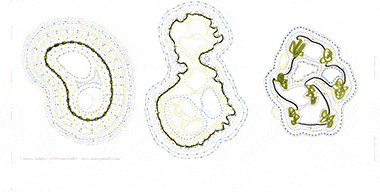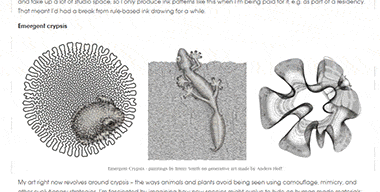


Drawing to rules
Procedural generation doesn’t have to be done with computers. Computers open up a lot more possibilities, of course, but there are plenty of examples of non-digital generative processes.
Like this method of drawing to rules, used by Immy Simth. It’s hand-drawn generative art. The constraints the rules set create a very specific feel to each piece, and the similarities between rule-sets (the use of a central black
nucleoli, for example) create a unity across the series.
If you’re looking for an easy, artist-friendly way to get started with generative art, reading this will be helpful. Generative art can start by just following a set of rules, and what you learn from this will help you if you want to teach a computer how to follow art rules. Plus it’s an interesting way to make art, in and of itself.
http://imaginingscience.tumblr.com/post/161542546063/drawing-to-rules-01
